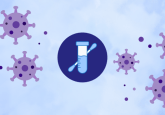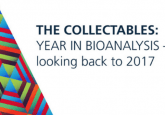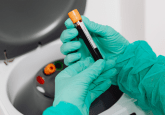The keys to successful implementation of microsampling

In this Column Stuart A. Kushon, Research and Development Manager of Neoteryx (CA, USA) discusses what he feels is the key to successful implementation of microsampling.
There is no doubt that specimens collected using dried blood microsampling technologies work for both preclinical and clinical applications. Ample research shows that capillary blood can yield quality results, which correlate to or may even match reference values from traditional venipuncture methods of collecting wet blood. It is also clear that there are applications for which dried microsamples of capillary blood will not work. The literature that is available is broad and papers are constantly appearing that show the relevance of the microsampling approach1-5. Additionally, there are numerous companies that offer fingerstick blood tests that can be found online.
That said, we have not seen widespread adoption, and given the guidance, information, and successes in numerous applications, we are left with the question: why?
As the head of Research and Development at Neoteryx, I have helped innovators and early adopters attempt to implement microsampling technology – several succeeded, but there was also a fair share of failure and missed opportunities. I have seen those that were successful streamline their workflows, prepare themselves for future growth, and save time and money in the long run.
With any novel technology, it is important to be cognizant of the limitations6,7. Microsampling technology cannot be applied to every application, and certain analytes are not feasible. It’s exciting because it’s disruptive – although it’s clearly headed for a tipping point, implementing and activating it still requires investment, effort, and courage. But it has been done successfully by enough companies that I have noticed some common characteristics of those that succeed with it.
Here are a few crucial elements that are almost always in play with a successful implementation, that any organization should consider.
Executive Buy-In
Scientists are the producers for their organizations, under pressure to generate results on tight deadlines. If dried blood microsampling is evaluated and a quick win happens then things generally move forward quickly and successfully. If the quick win doesn’t happen, then there are obstacles to overcome with strategic effort.
In such cases, successful implementation must be driven by understanding and support from a business development perspective. Successful adopters see microsampling not just as a boon for their own financial business interests, but as a means of providing a better care pathway.
When Exagen Diagnostics discovered microsampling, they saw its larger context8. They identified a competitive advantage with their AVISE® Touch™ platform (which provides at-home sampling for medication monitoring). The logistical advantages of dried blood provide Exagen financial benefits as well.
Exagen’s validation process made use of its expertise in sophisticated sample preparation for immunological based assays, but it hinged on confident leadership.
The company’s leadership supported a complex but exciting validation program. Based on the presentations that I’ve seen from them at MSACL in 2016 and 2017, the effort was not without its challenges and rewards. Exagen’s AVISE Touch™ platform is now commercially available for two tests, HCQ and MTX. Their presentations mark a path any motivated company can follow.
Tenacious Science
The clients I have seen enjoy the most success adopting microsampling are the ones that have shown consistent leadership and scientific rigor. The more experience a client has with optimizing extraction efficiency, performing meaningful bridging studies, and testing methodology and troubleshooting, the more likely it is they can pull off a successful implementation of dried blood microsampling for capillary blood.
Take Charles River Labs, a leader contract research organization. Charles River has played a crucial role in the recent advent of multiplexed immunoassay platforms, developments which enable them to perform the most complex serosurveillance panel in a single test well on as little as 2 μl serum, or the equivalent volume of blood, eluted from a dried blood spot (DBS).
Charles River’s previous investments in testing dried blood technology gave it the experience and discernment to understand the opportunity afforded by microsampling. Thus, the lab was qualified to compare microsampling against existing methods (e.g. DBS) for lab animal serology and primed to develop its HemaTIP™, based on Mitra Volumetric Absorptive Microsampling (VAMS™) technology from Neoteryx, for simpler and more quantitative blood collection and superior reproducibility.
Short-Term Risk, Long-Term Vision
Microsampling implementations require an “appetite for disruption.” They don’t succeed overnight. They often require side-by-side redundant processes for a time, as well as other growing pains. Those who prepare for transformation and break through temporary inconveniences create models for how to effectively encounter and surmount these challenges.
Organizations who successfully implement dried blood microsampling technology tend to be the ones who can see well past the end of the quarter. They understand trends toward efficiency, simplification, streamlining, and automation, and sustainability. Successful clients can envision how a Mitra implementation will look five years down the road and how it will assist them in achieving their strategic initiatives while cutting costs, saving labor, and generating reliable results.
Cedars-Sinai is internationally known for its advancements in precision medicine. It embraced microsampling with an eye toward a future that includes patient-directed and patient-centered care through precision medicine.
Cedars scientists and executives intuitively understood that at-home dried blood microsampling would empower its precision medicine initiatives by enabling a more convenient and comfortable care pathway for its patients. It understood the practical value of microsampling and how thinking outside of the clinic would facilitate patient recruitment for trials as well as simplify biomarker monitoring in the future.
By marrying together at-home specimen collection, wearable technology, and cutting-edge proteomic science, Cedars-Sinai is paving a path to revolutionize medicine.
The debate about the effectiveness of dried blood microsampling technology is essentially over. Labs around the world are already generating useful results and strong correlations with wet blood sampling methods, while improving convenience and reducing costs over time.
This does not mean it will work under any circumstances. But I believe that most labs can create the circumstances that give rise to a successful implementation and reap the benefits of dried capillary blood, more so than was possible a few years ago.
2. Bosilkovska, M. et al. Simultaneous LC–MS/MS quantification of P-glycoprotein and cytochrome P450 probe substrates and their metabolites in DBS and plasma. Bioanalysis 6, 151–164 (2014).
3. Chambers, A. G., Percy, A. J., Yang, J. & Borchers, C. H. Multiple Reaction Monitoring Enables Precise Quantification of 97 Proteins in Dried Blood Spots. Mol. Cell. Proteomics 14, 3094–3104 (2015).
4. Lehmann, S., Delaby, C., Vialaret, J., Ducos, J. & Hirtz, C. Current and future use of ‘dried blood spot’ analyses in clinical chemistry. Clin. Chem. Lab. Med. 51, 1897–1909 (2013).
5. Mercolini, L., Protti, M., Catapano, M. C., Rudge, J. & Sberna, A. E. LC–MS/MS and volumetric absorptive microsampling for quantitative bioanalysis of cathinone analogues in dried urine, plasma and oral fluid samples. J. Pharm. Biomed. Anal. 123, 186–194 (2016).
6. George, R. S. & Moat, S. J. Effect of dried blood spot quality on newborn screening analyte concentrations and recommendations for minimum acceptance criteria for sample analysis. Clin. Chem. 62, 466–475 (2016).
7. De Kesel, P. M., Sadones, N., Capiau, S., Lambert, W. E. & Stove, C. P. Hemato-critical issues in quantitative analysis of dried blood spots: challenges and solutions. Bioanalysis 5, 2023–2041 (2013).
8. Qu, Y. et al. Capillary blood collected on volumetric absorptive microsampling (VAMS) device for monitoring hydroxychloroquine in rheumatoid arthritis patients. J. Pharm. Biomed. Anal. 140, 334–341 (2017).
For more information about the Neoteryx products mentioned in this article and more, please click here.






